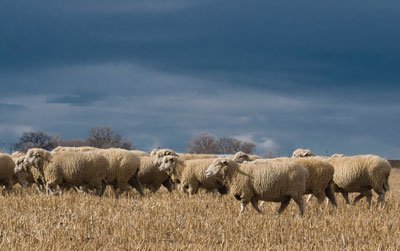
Grilled Colorado Lamb Chops
In its March issue, Denver magazine had a terrific article on Colorado lamb:
“Is there a more innocent, idyllic creature than the spring lamb? It’s been a symbol of purity and, by extension, rebirth for millennia — morphing from Aries, the first sign of the zodiac (today more commonly depicted in adult form as a ram), into a Judeo-Christian icon of sacrifice and resurrection that, in turn, manifests as an Easter supper centerpiece and Passover Seder ceremonial offering.”
I’ve tasted lamb from different parts of the U.S., as well as from Australia and New Zealand. None has the flavor or the texture of Colorado’s grass-fed lamb.
The state saw its cattle and sheep industry take off in the late 1800s, when New Zealand and Australia controlled the international wool market. However, these farmers fed and bred their sheep to optimize wool production. In Colorado, the opposite was – and still is – true: the focus is on meat quality, with wool being of secondary consideration.
The animals feed on bromegrass, orchardgrass, and perennial rye, all of which thrive in Colorado’s mountain climate. In the winter they eat alfalfa hay. And I love this quote:
“Oogie McGuire, owner of the Desert Weyr farm, says, “Terroir is not just a word that describes cheese or fine wine.” If she’s right, then all those mountain springs and lush valleys in the marketing materials of Colorado lamb promoters aren’t just for show — they’re what’s for dinner. “
According to the American Lamb Board, domestic lamb is of higher quality because it “travels up to 10,000 fewer miles and about 30 days less than imported lamb.” Another advantage: the ribeye of an American lamb rib chop provides 38% more meat than Australia and New Zealand rib chops.
The quality is so good that we do as little as possible to interfere with this beautiful piece of meat. We simply rub a garlic clove on the meat and place it on the hot grill, adding rosemary and some coarse salt.
By the way, scottadito translates to burn with heat [scottare] and finger [dito], or burned finger. Pick up a hot Colorado lamb chop by its bone and you’ll understand. We never frown on guests eating with their fingers, we encourage it!
Buona Pasqua!
Further Reading:
- Colorado Lamb: A Culinary Star The Denver Post
- Colorado Lamb, Bred for Deliciousness Serious Eats
- Colorado Lamb Buying Guide Denver magazine
.
Mmmmmm…..wish I could fly to Bellavitae for your prep of OUR lamb chops!
🙂